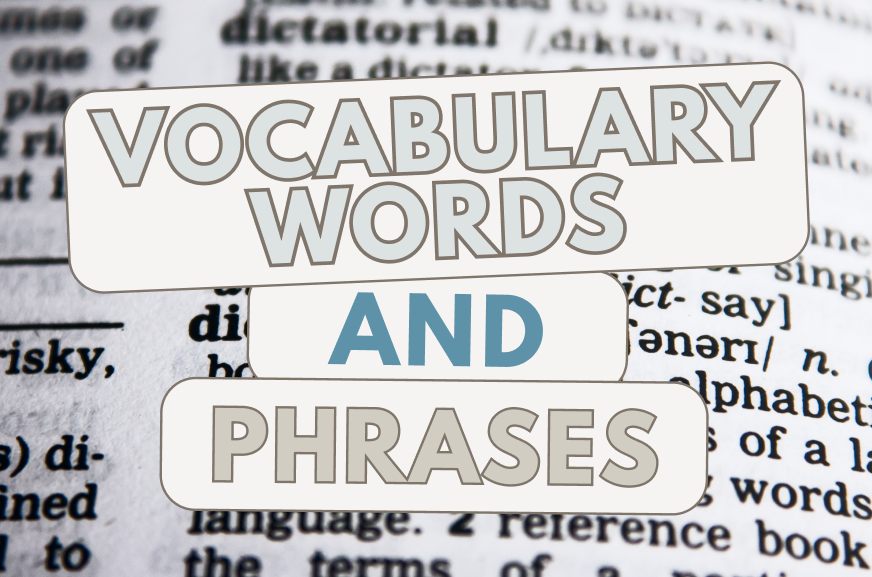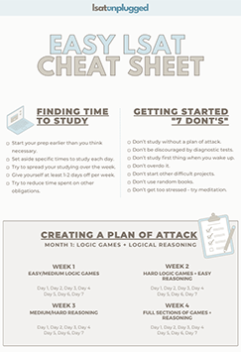Logic Games vocab is a tricky thing. The problem generally isn’t knowing what each word means. The problem is knowing how the words interact with each other and what various phrases actually mean.
For this reason, I’ve decided to go over several things in this article rather than simply doing a vocab list:
1. Words and phrases that can help you recognize a particular type of game.
2. General tips to help you watch out for linguistic trickery and avoid making unwarranted assumptions.
3. Phrases indicating List/Acceptability questions
4. Tips on understanding a particular kind of question that differs from List questions
5. Phrases indicating Suspension and Substitution questions.
6. Tips on understanding some rules that indicate double-arrows
7. A list of 10 words you must know for Logic Games
1. Recognizing Types of Games
Pure Sequencing, Basic Linear, Advanced Linear
Consecutively / Sequentially / Successively
Ranking / Ordering
No two occur simultaneously, no two occur at the same time
One at a time / One after the other
Not simultaneously, not concurrently, not at the same time
Precedes = comes before
Follows = comes after
Immediately follows
Immediately precedes
Preceded by
Followed by
Immediately preceded by
Immediately followed by
Selection
Selected
Contained
Chosen
Splitting
(Variables are divided among) exactly one of two (groups)
2. Avoid making unwarranted assumptions with regard to order
Pay attention to the order in which things occur or are ranked (this applies to Pure Sequencing, Basic Linear, and Advanced Linear games):
front – back
earlier – later
before – after
most – least
behind – in front
Also pay attention to how rules and answer choices are presented.
LSAC often gives you the second of two variables first, which requires you to mentally rearrange the variables.
Examples:
PrepTest 34, Game 3, Question 16 (p212 in Next 10)
PrepTest 36, Game 2, Question 9 (p279 in Next 10)
3. Recognizing List / Acceptability Questions
They’re often the first question in any Logic Game.
Could be the composition
Could be a complete and accurate list
Could be accurate matching
Could be an acceptable selection
4. Understanding “Complete and accurate list…any one of which” Questions
For these questions, they’re not asking if each variable in each answer choice’s list could perform a given action simultaneously. They’re just asking in general.
5. Recognizing Suspension and Substitution Questions
Rule suspension questions (when the fundamental rule of a game are changed):
Suppose the condition is added…all the other/original/initial conditions remain…
Suspended
Rule substitution questions (appeared in PrepTests 57, 58, and 59)
Which one of the following, if substituted for the restriction/condition that…would have the same effect?
Assume original condition X is replaced by condition Y
6. Recognizing and Understanding Double-Arrow Rules
“If, and only if” / “If, but only if”
Both of these create a double arrow: X <—> Y
The first “if” introduces the sufficient condition, and the second “if” introduces the necessary condition. This means that X and Y are both sufficient AND necessary for each other. Either we have both, or we have neither.
Examples:
PrepTest 45, Game 4
PrepTest 56, Game 2
“If X then Y; otherwise, not Y.”
The first half is simply what it says: “X -> Y”
The second half, “otherwise, not Y,” really means “If NOT X -> NOT Y
The contrapositive of this second half is Y -> X
Combining this with the first half, we get a double-arrow: X <—> Y
Example:
PrepTest 55, Game 4
Yes, this sort of rule is identical in meaning to the “if, and only if” / “if, but only if” rule that I explained immediately above this rule.
7. List of 10 Logic Games Vocabulary Words
Adjacent = immediately next to / touching
Corresponds = matches
Distinct = different, unique
Respectively = in this particular order
Consistent = could be true / does not violate
Inconsistent = cannot be true / violates
Determine = figure out
Fully determined = completely figure out
Not necessarily = does not have to be
Neither X nor Y = NOT X and NOT Y

